
Rose-root (Sedum rosea) has also been cultivated to grow in gardens, reaching heights of 5–10 times its mountain sisters. Earlier it was cultivated to grow on turf roofs, believed to protect the house from lightning and fire. (Farther south in Europe houseleek (Sempervivum tectorum) was used for this purpose.)

Purple Saxifrage (Saxifraga oppositifolia) flowers when the snow carpet has (nearly) melted. It doesn't grow on too acidic soil (which unfortunately is common in Norway), but may be abundant in favourable places.
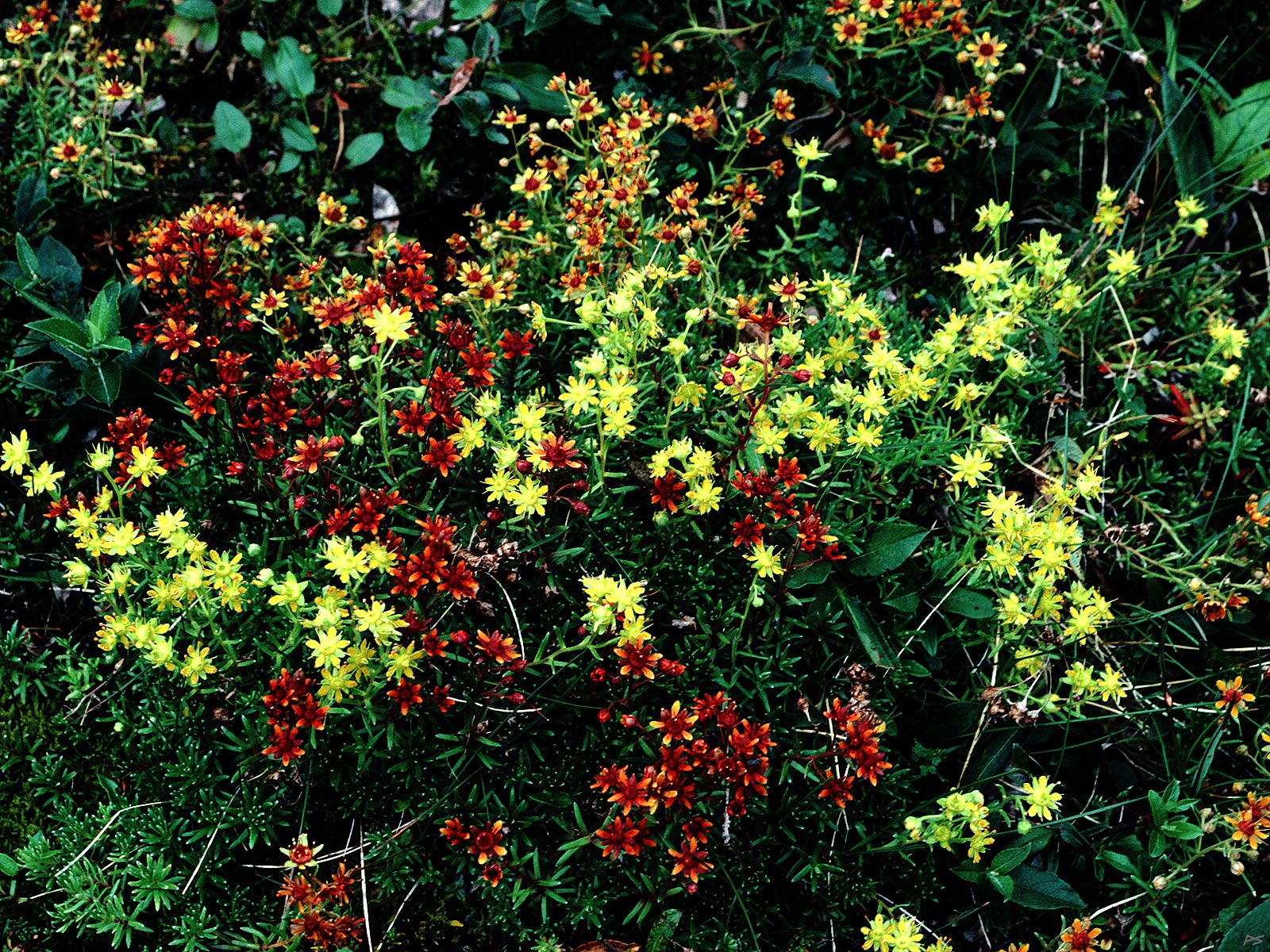
Yellow Mountains-Saxifrage (Saxifraga aizoides) has usually yellow flowers, but occasionally two other variants are seen. Here they are, all three of them, found in the wild on the Dovre plateau. (1986)
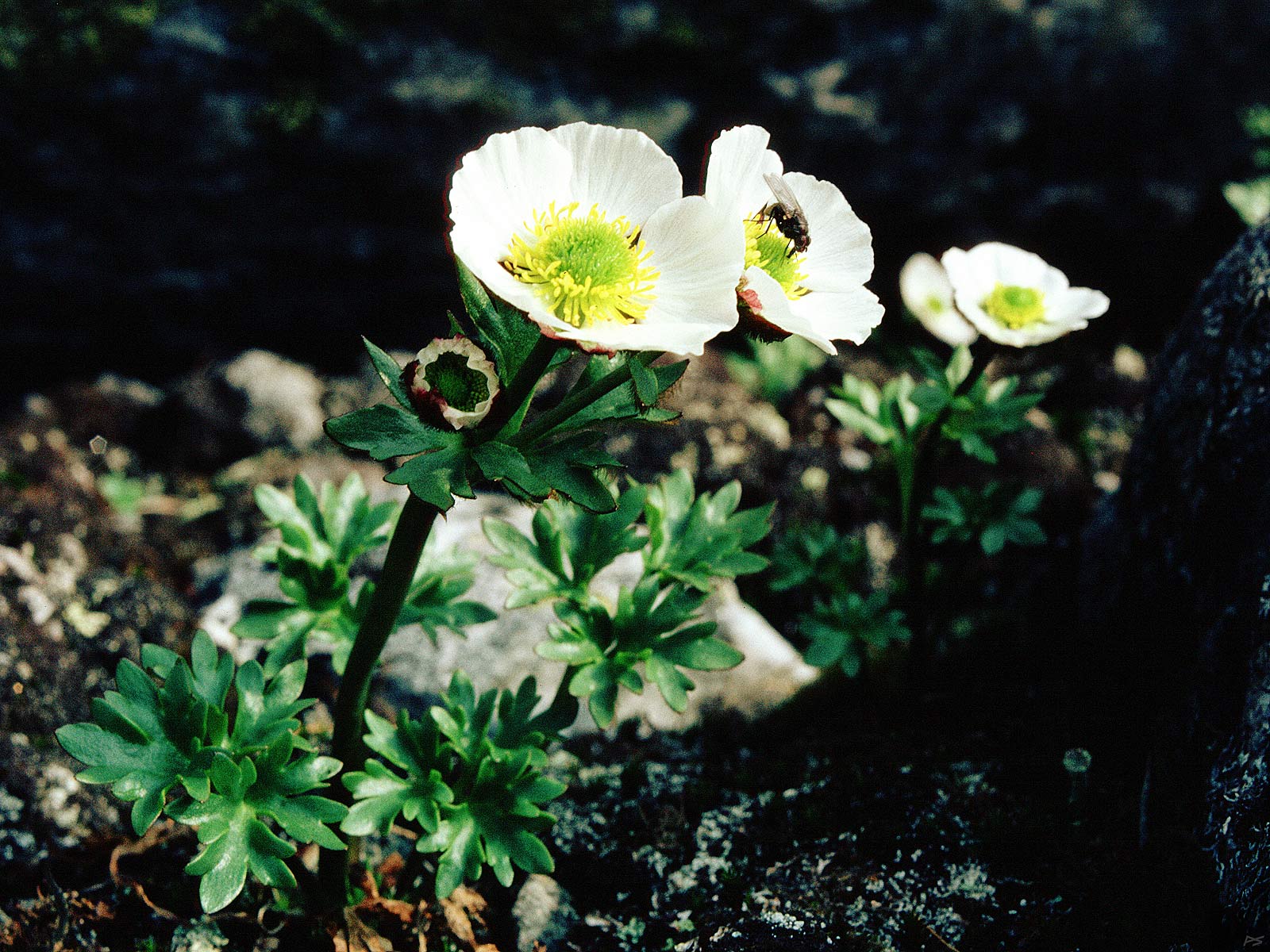
Glacier Buttercup (Ranculus glacialis) flowers on the raw soil exposed when the glacier retreats during the summer. The flowers always turn towards the sun, so the fly you see enjoys both the nectar and some warmth.
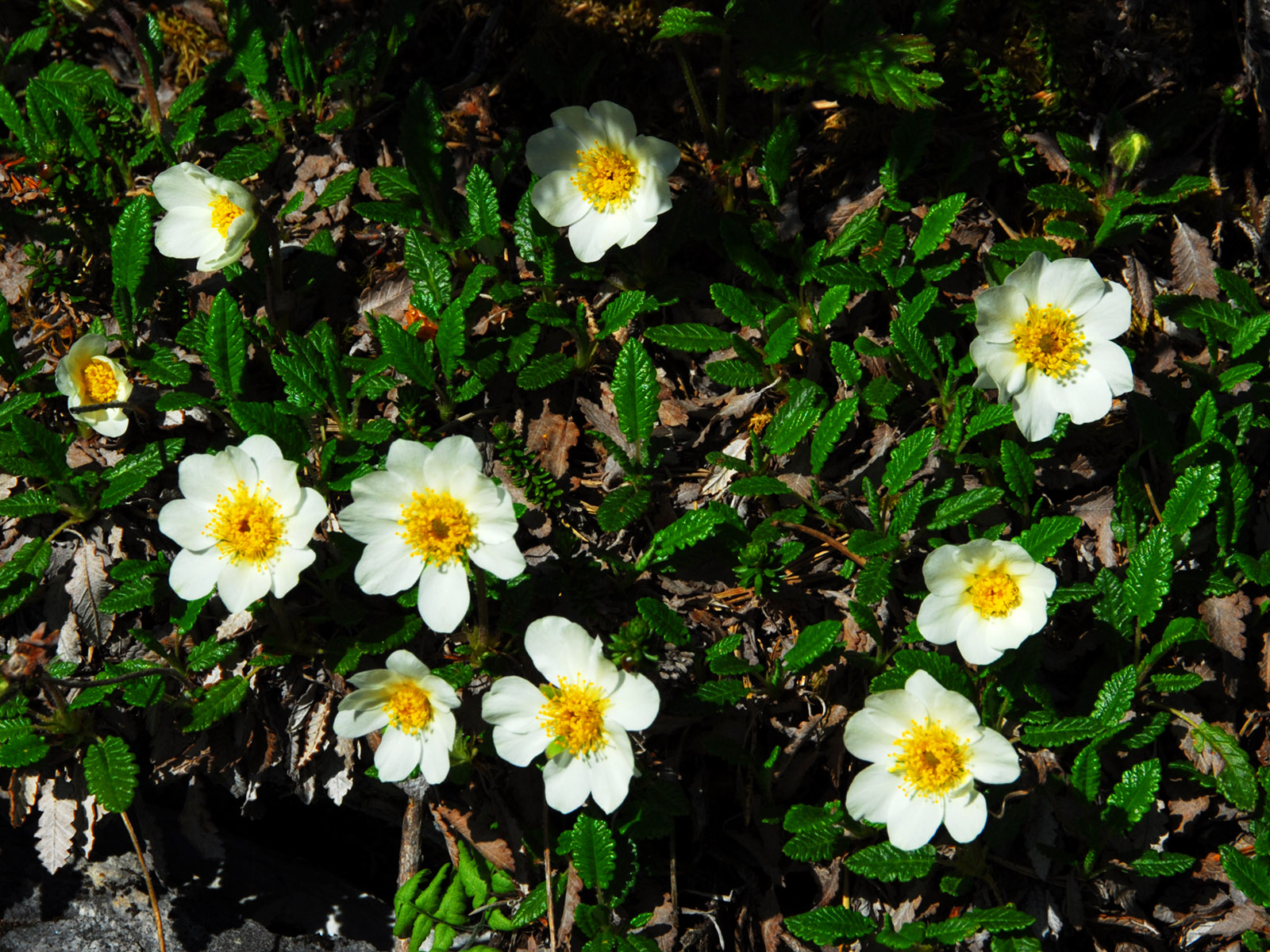
Mountain Avens (Dryas octopetala) prefers a base-rich soil. It's an evergreen shrub seen as large mats on high dry grounds. Incidentally, when this part of the word warmed up after the last ice age, the temperature dropped again for a period of a thousand years, 12900–11600 years ago, called the Younger dryas, when this plant then grew all over Europe.
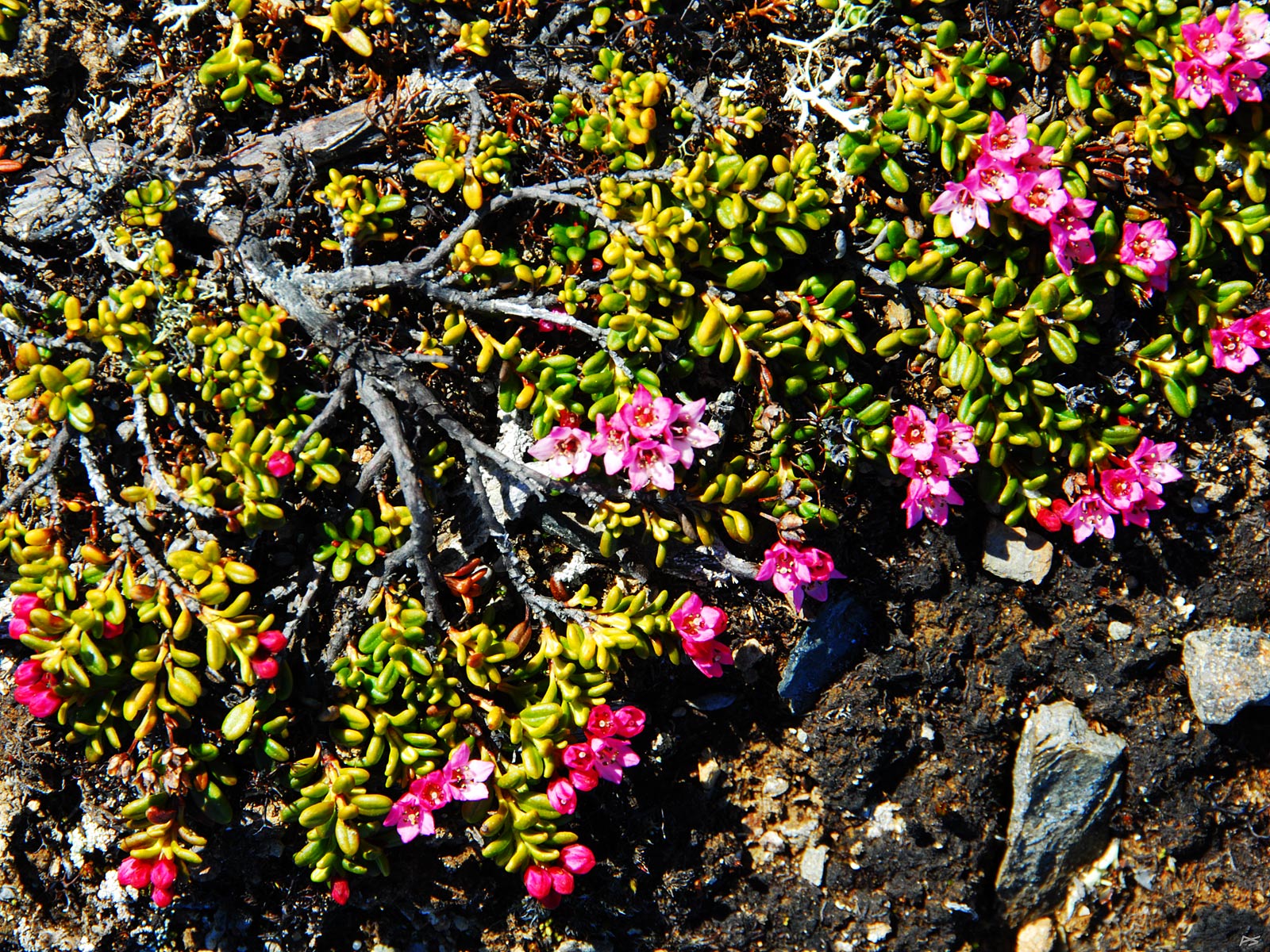
Loiseleuria (Loiseleuria procumbens) is a procumbent undershrub growing in exposed places. It is common in Scandinavian mountain areas.
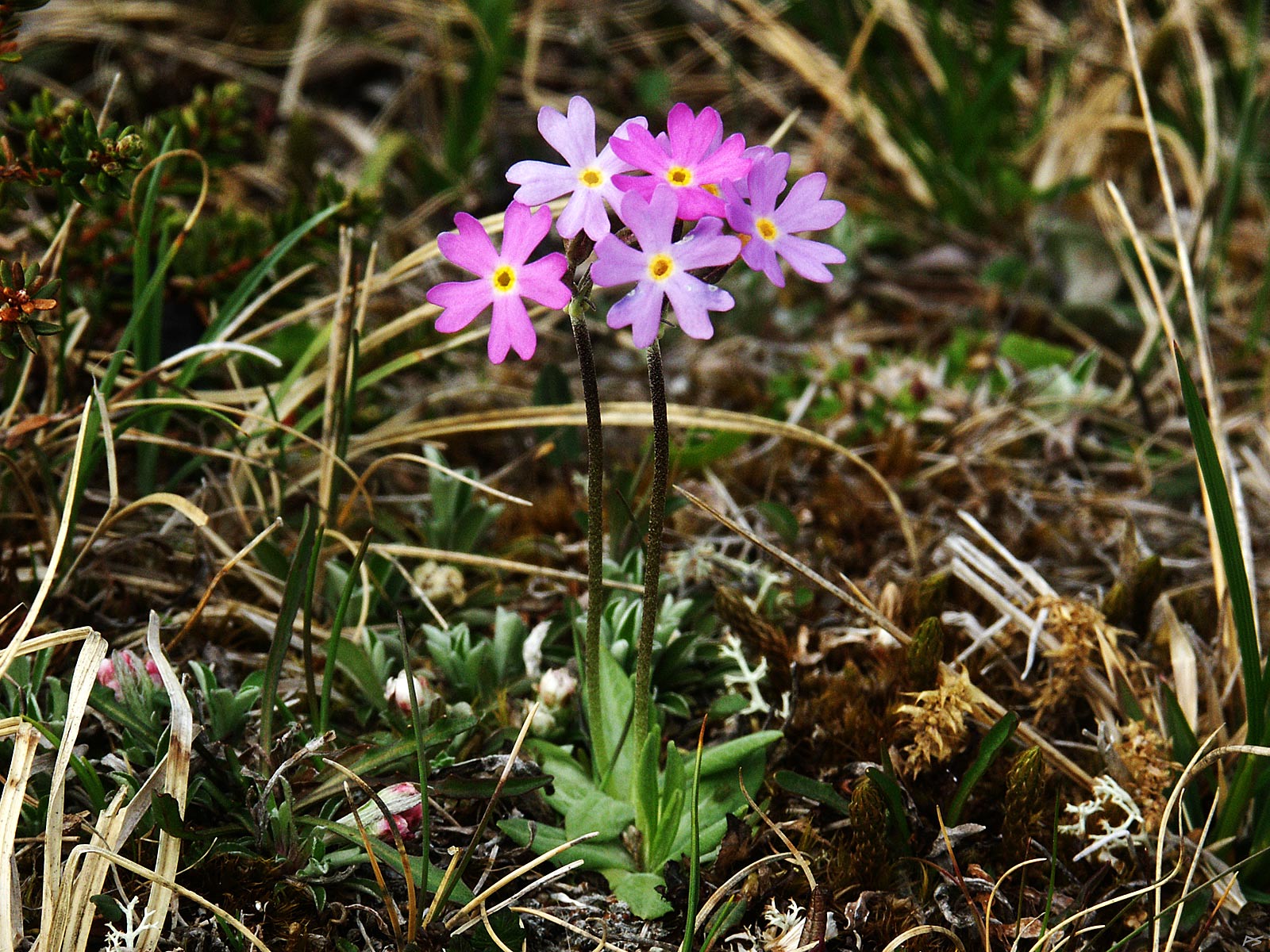
The Scandinavian Primerose (Primula scandinavica) thrives on calcareous soils in the highlands and is found only in Scandinavia. A close relative grows in Scotland and in the Orkney. (2003-06-17)
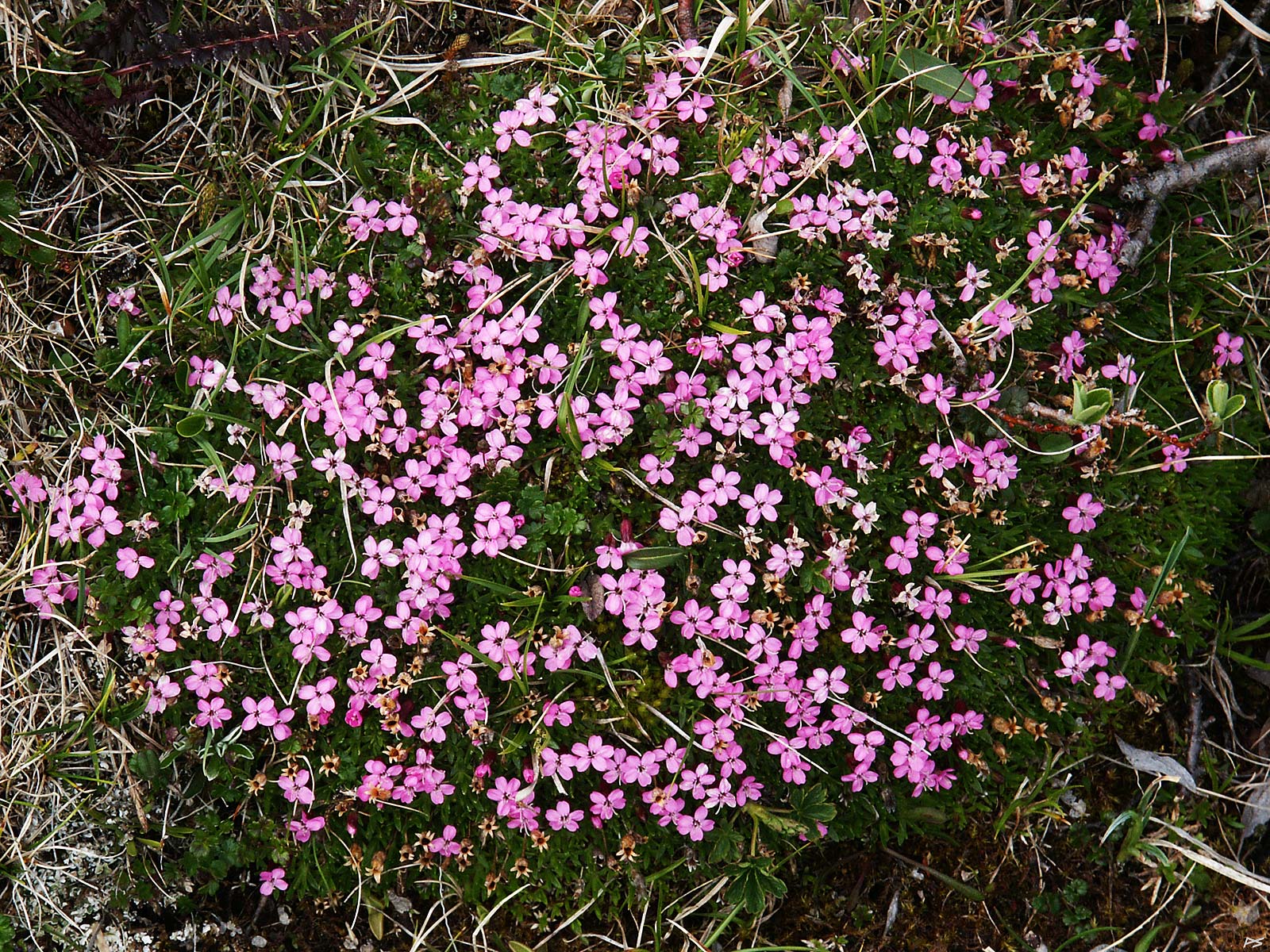
Moss Campion (Silene acaulis) grows densely tufted forming large cushions.
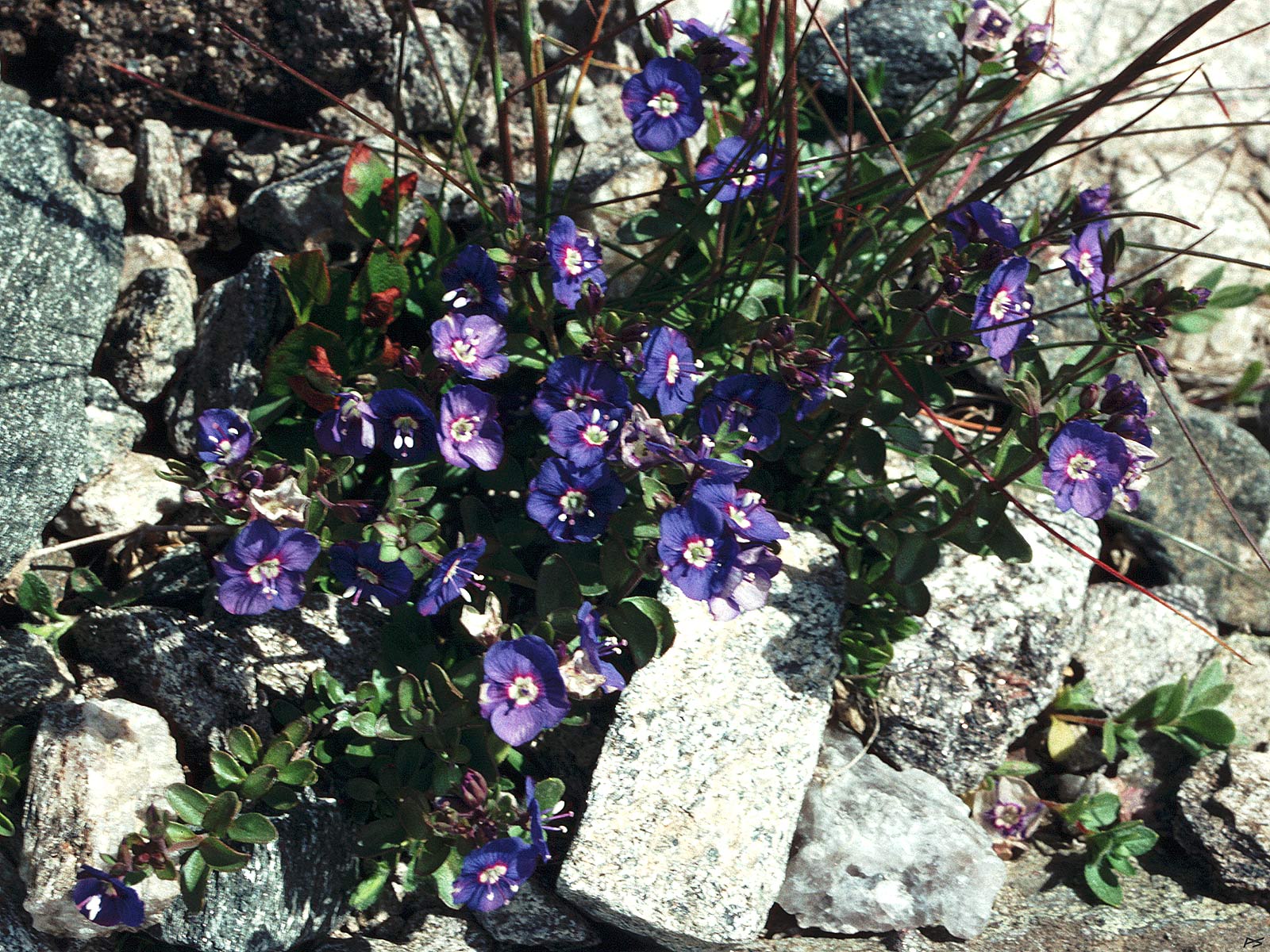
Rock Speedwell (Veronica fruticans), the transient beauty. Tomorrow, or maybe the day after, it'll be gone.
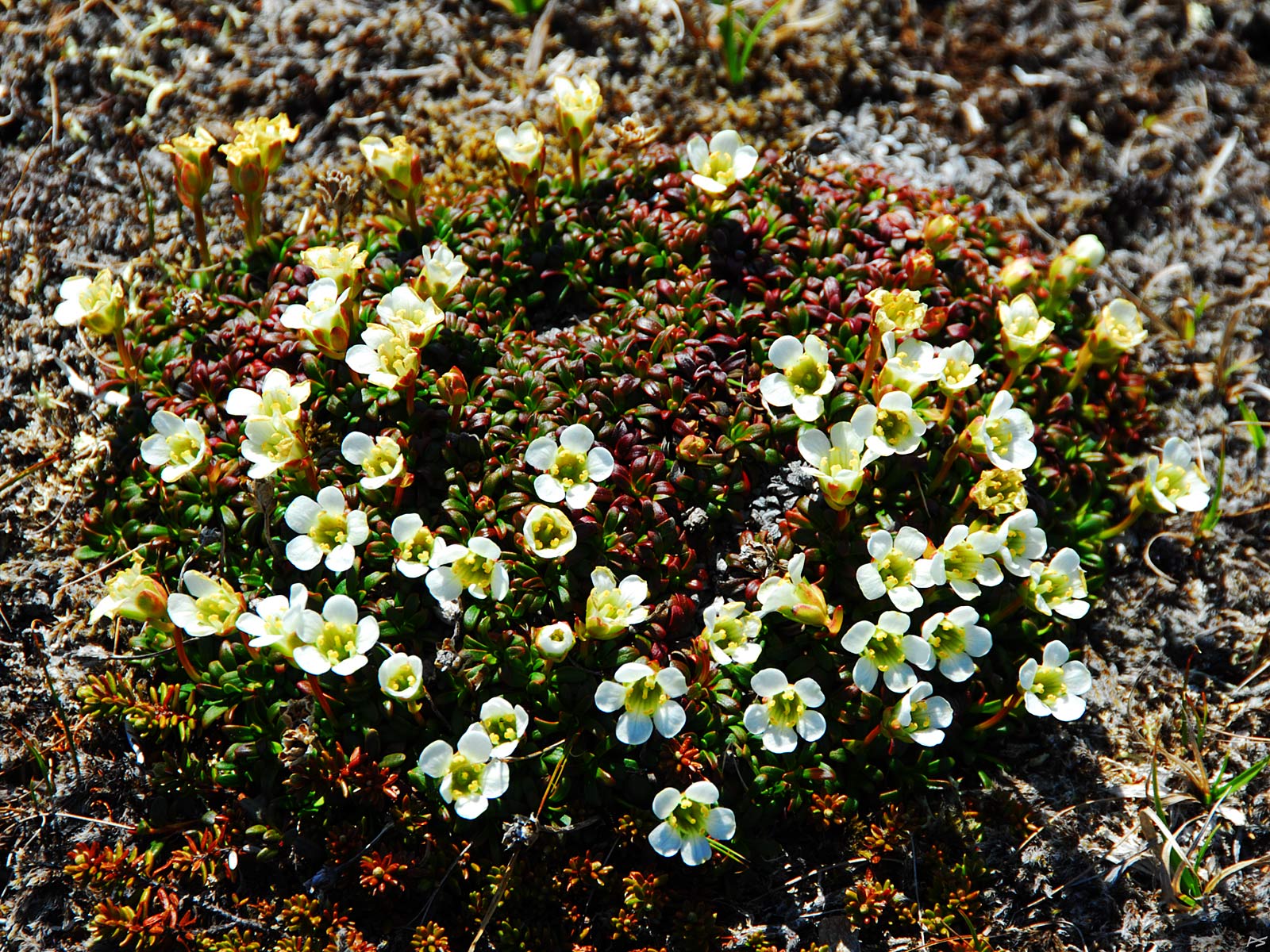
Lapland Diapensia (Diapensia lapponica). The Norwegian name is fjellpryd, meaning mountain decoration.
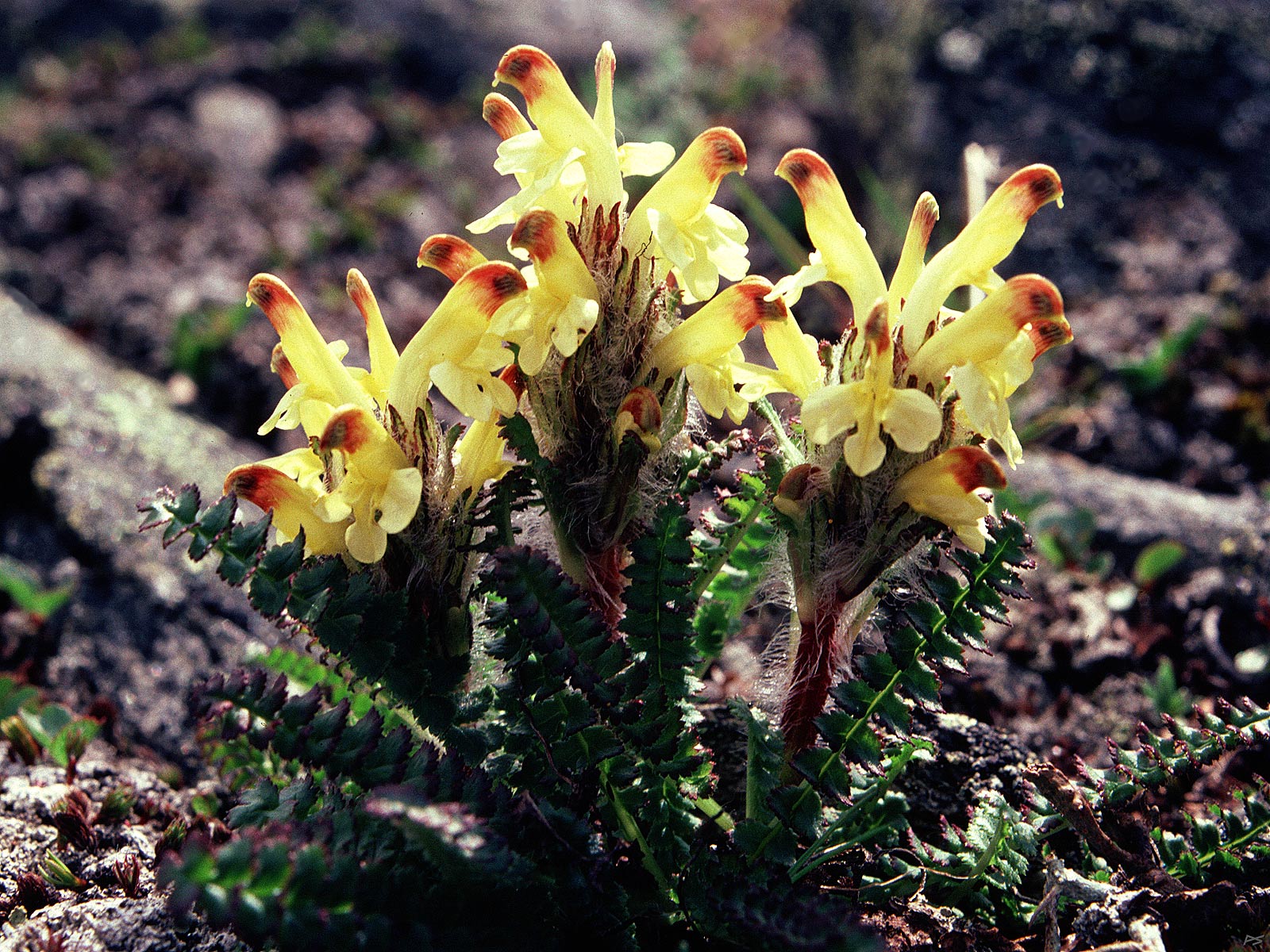
Oeder's Lousewort (Pedicularis oederi ) doesn't like sour soil but may be an abundant and very beautiful spring flower on base-rich soil.

Oeder's Lousewort (Pedicularis oederi ) often have this dark red-brown foliage.

Two-flowered Violet (Viola biflora) groves in the mountains and here also in shaded places in the lowland, often in the sand along brooks.
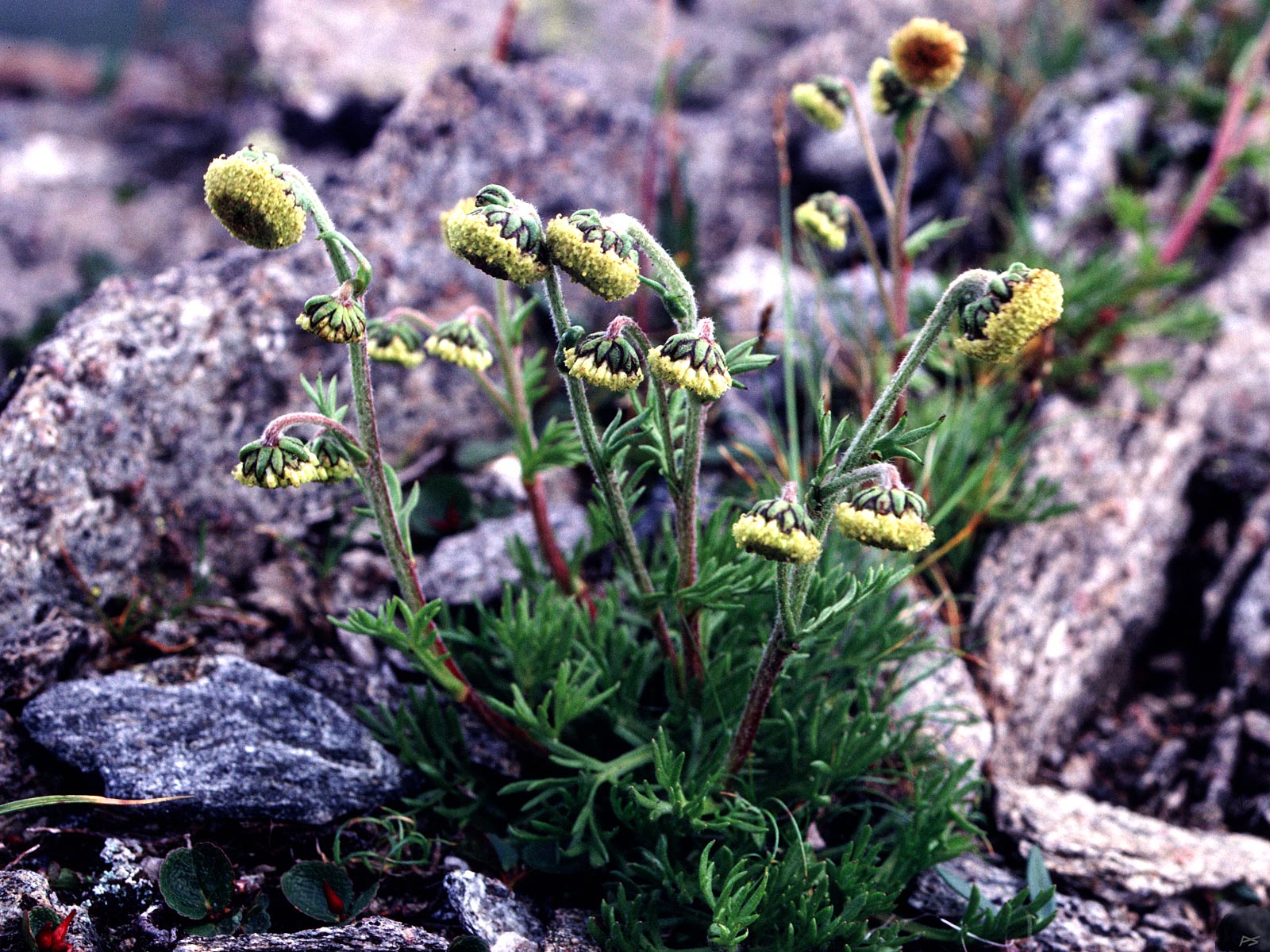
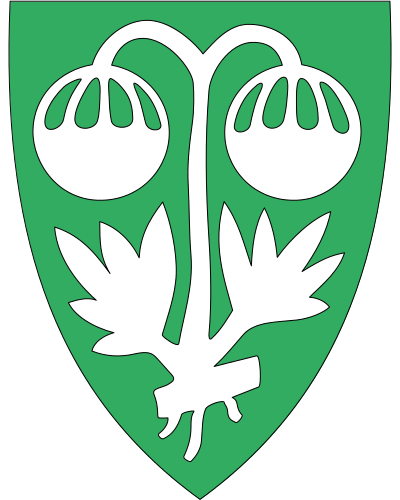 Norwegian Wormwood/Mugwort (Artemisia norwegica) is not the most beautiful plant and you can't use it making absinthe liqueur, but it's rare, found in Trollheimen and in a minor location in the southernmost part of Norway, three locations in Ural, and one (of a subspecies) in Scotland. (Riaren, west of Blåhø). A stylized picture of the plant is the coat of arms of the Sunndal community.
Norwegian Wormwood/Mugwort (Artemisia norwegica) is not the most beautiful plant and you can't use it making absinthe liqueur, but it's rare, found in Trollheimen and in a minor location in the southernmost part of Norway, three locations in Ural, and one (of a subspecies) in Scotland. (Riaren, west of Blåhø). A stylized picture of the plant is the coat of arms of the Sunndal community.
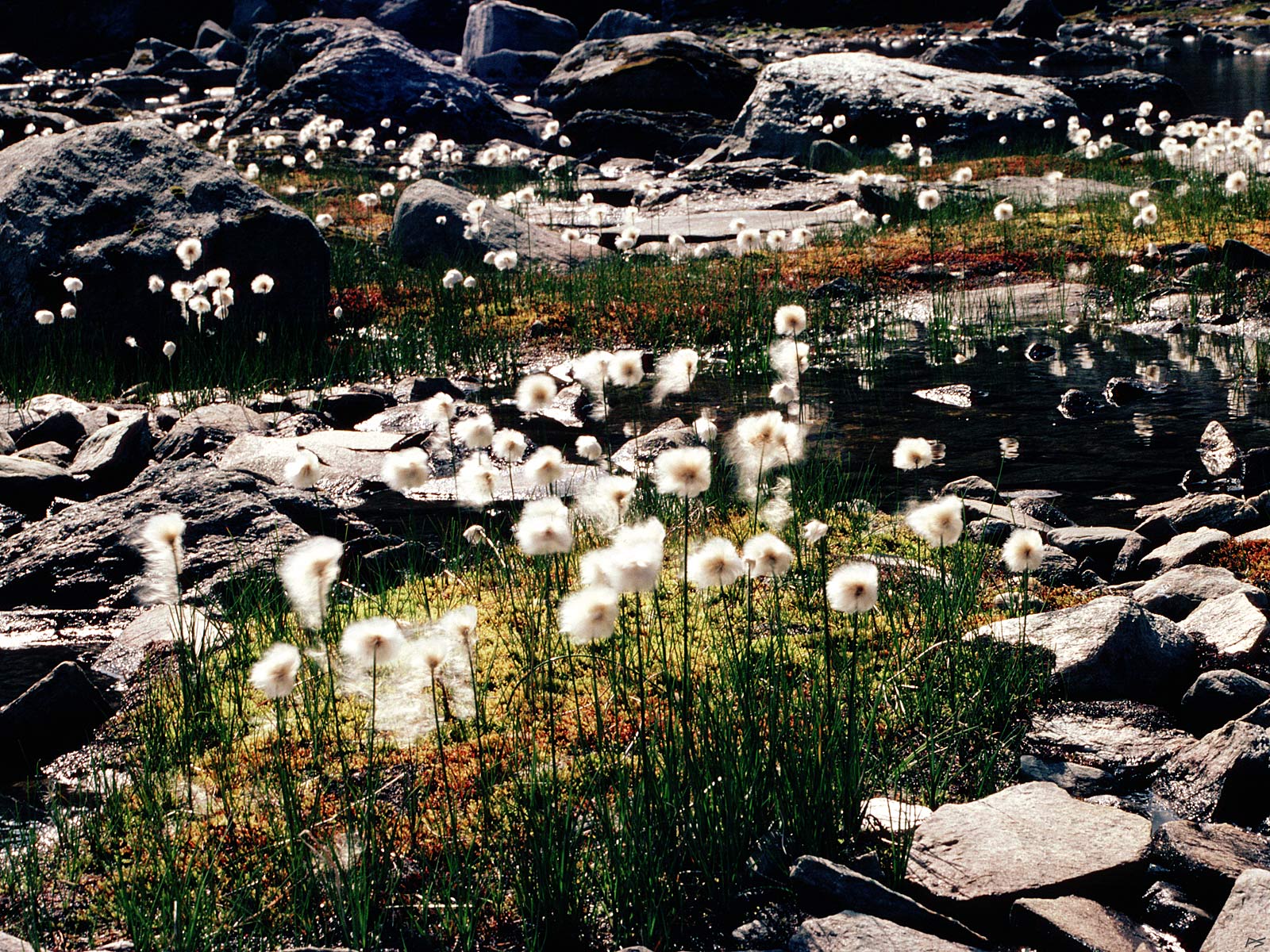
Arctic Cotton-grass (Eriophorum scheuchzeri). (1986)

Common Butterwort (Pinguicula vulgaris), a carnivorous plant, thrives in the mountains as well as in the lowlands. Note the small insects trapped on its leaves. (There is also a true mountain species (P. alpina) with white flowers, growing only on base-rich soils.) (1987)

Chlamydomonas nivalis (which is not a flower). This is a picture of a snowball suitable for throwing. It's coloured by a microorganism, commonly classified as a green algae, which often tints patches of the melting mountain snow with this purple-red colour. Being it its dormant state, chlorophyll is temporarily absent and its content of hematochrome determines the colour.
